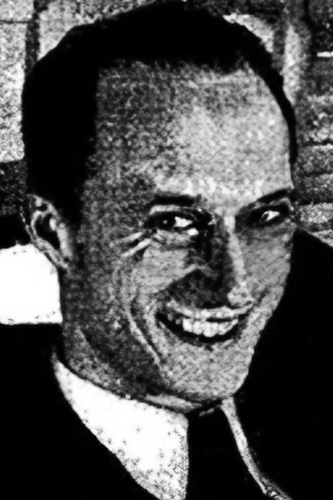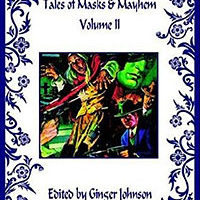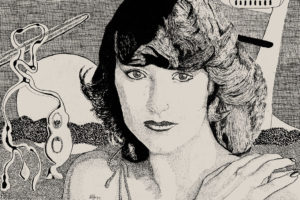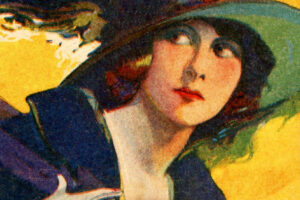
I had never heard of the character. Not that surprising as many popular characters and writers of the past are now largely forgotten. Sometimes for good reason. But I was intrigued and had to check it out for myself. And I found that most of the stories had been reprinted.
The author was Hiram Gilmore “Harry” Bates III (1900–81), who was a science-fiction editor and writer. He was the first editor of Astounding Stories in 1930-33, as well as its sister publication Strange Tales during its run (1931-33). These were published by William Clayton until his firm went bankrupt in 1933, at which time they were sold to Street & Smith. I guess Bates moved on to other things. What, I have no idea. His sf writing career was mainly in the 1930s with some in the ’40s, all shorter works.
He is probably best known for his short story “Farewell to the Master” (Astounding Science Fiction, 1940), which was the basis of the science-fiction movie The Day the Earth Stood Still (1951).
What I find most intriguing about the Hawk Carse series was that it was written with a purpose in mind. In several interviews, it’s clear that Bates wasn’t happy with the science-fiction stories of the time, finding them poorly written. Unlike Hugo Gernsback, who seems to want to focus on science, Bates instead felt that the story and its pacing were more important, even if the science wasn’t that accurate. Basically, he wanted to emphasize the fiction and not so much the science.
Thus Bates relates, in Alva Rogers‘ A Requiem for Astounding (1964), that he actually created the series to show how to mix convincing characters with not-too-convincing science. To provide an example to the writers of a “vivid hero and villain,” and, of course, for the readers, “a whopping hero versus villain.” Did he succeed?
So with that in mind, I wanted to obtain these stories and see if I felt he was successful, especially in light of some reviews I noted about the series and characters being, well, not very good. Or, as one put it “so bad, it’s good.” One called it a pulp western transplanted to space, with a Fu Manchu-like villain, which I have to agree with. But what I don’t know is whether it influenced other writers.
And as Bates was an editor, the stories couldn’t come out under his name, hence the creation of the Anthony Gilmore pseudonym. The last name makes sense, but I have no idea about the first. Also, the series was assisted by another editor, Desmond W. Hall. In fact, the two collaborated for several stories under the Gilmore name.
- “Hawk Carse,” Astounding Stories (November 1931)
- “The Affair of the Brains,” Astounding Stories (March 1932)
- “The Bluff of the Hawk,” Astounding Stories (May 1932)
- “The Passing of Ku Sui,” Astounding Stories (November 1932)
- “The Return of Hawk Carse,” (by Bates alone) Amazing Stories (July 1942)
Only the first and fifth stories were noted on the cover, but not cover-featured.
The first four would later be collected in Space Hawk: The Greatest of Interplanetary Adventurers (Greenberg, 1952), and Wildside Press has reprinted it. The four stories are made to appear to be a single novel. Not difficult as I would characterize the 4 short stories as more a serialized novel then a series of short stories.
In comparing the original stories, there were some changes, mainly reworking the dialogue and some cleanup of language. And frankly, I’m glad they did this, as it made the story more palatable for modern audiences. You may still be put off by some elements, but not as much if you had read the original.
Also, despite what some sources say, this collection only contains the first four stories. As yet we have not gotten a complete collection of the Hawk Carse stories in print.
So the first story gives us the setting. It’s the period of 2100-2120, though it’s hinted we are being told these stories from 100 years further in the future when the Solar System is more “civilized.” The stories are set in the outer solar system, which is a lawless frontier at this time. So it’s quickly clear that this is a “space western.”
Now I thought maybe Hawk Carse was some kind of roving lawman, but not so. He’s basically an adventurer and ranch owner, but one with a quick draw and a hidden past. We are told that his flaxen hair comes down over his forehead almost to his eyebrows for reasons we are never told. And we are told that in the past there were five men standing over another one on the ground, who says he will kill the others for what they did to him. Only they had seen what was on his forehead. The man on the ground was Carse. The first of these we will meet in the first story is Judd the Kite. Another is a Venusian, Lars Tantril, met in the third story. Both work for Dr. Ku Sui, who we learn much later is also one of the five. And no, we never learn who the other two are or were.
Recurring characters are few in these stories. In addition to Carse, we have Friday, Hawk’s right-hand man, a large black man. He is loyal and intelligent, and not treated as a lowly servant. But sadly in the original stories he is given a horrid accent, though in the book version his dialogue was re-written. There is Master Scientist Eliot Leithgow, whom we are told is one of the smartest men in the system. But he was somehow framed by Dr. Ku Sui and is basically exiled from Earth. We will learn for what. He works from a hidden lab, known only to Carse, on a satellite of Jupiter.
And our main villain is Dr. Ku Sui, a Eurasian and one of the smartest men in the system, second only to Elliot. He is a deadly foe to Carse, operating from a hidden base, using his super-science knowledge. We will learn his hidden base is an asteroid that he is able to move about as he wishes, and he is able to make it invisible.
As for the rest of the system, we know little about most other worlds. Venus is noted as a jungle world and appears to be settled, though has a native race. Same with Mars, and both Venusians and Martians are part of the space lanes. We will learn more about the Venusians in the series.
Things start on Iapetus, a moon of Saturn, where Carse has a ranch. The moon has an Earth-like atmosphere and gravity. And there’s a native lifeform, an ostrich-like creature called a phantis. Their horns are valuable and are harvested to sell. But pirates led by Judd the Kite raid his ranch, murder his ranch hands, and Carse isn’t able to stop it, though is able to save the harvested horn. Taking the horn he goes after the pirate spaceship only to learn a trap has been set: a fungus hidden with the horns that kills all his crew but himself and Friday, who got in their spacesuits in time. There is a back and forth between them and the pirates until Carse gets the upper hand, including eliminating Judd the Kitt. He hopes to find Ku Sui and expose him.
Ku Sui for some reason wants to find M.S. Leithgow. We will learn why when Ku Sui captures Carse and Friday, and uses his machines to extract where Carse was to meet Leithgow in Port of Porno, a semi-piratical port on a moon of Jupiter. When Leithgow is captured we learn why Ku Sui wants him and for what he was framed.
Ku Sui had captured the five main scientists of Earth, framing Leithgow for their deaths. But they are not quite dead. Instead, Ku Sui has taken out their brains and linked them into a single coordinate unit, allowing him to use their knowledge and expertise. And he wishes to add Leithgow’s brain to the unit. Can Carse rescue Leithgow from this fate worse than death? And can he somehow restore the brains and clear Leithgow’s name? You’ll have to read the rest to find out.
While Carse is able to do this, we never do learn why his forehead is covered and who the other men that attacked him.
Did Bates succeed in his goal? Well, you do have to admit the series is a rousingly good story. The dialogue is a little clunky, but these are pulp-fiction stories. The science is never explained. It just is. There are ray guns that send out a burning ray like a laser. Ships (and the asteroid and a group of special space suits) are powered by “gravity plates”. We learn of protective power webs and the like. How they work, we are never told. They just do. So I think this goal was met. Did it lead to better stories? That I don’t know.
I was able to obtain an ebook version of the whole series, and thus able to read the fifth story, “The Return of Hark Carse.” While written 10 years after the others, the story is set three months after the action of the others, and tells us what occurred with many of the characters after the fourth story. In particular, the five men whose brains Ku Sui had stolen. They had been put into new bodies, but these bodies were not their own, which caused problems both for them and their wives.
Then Leithgow found a solution: a means to clone these five men. But not from DNA, but from sound recordings. (Talk about wild science-fiction ideas). And if that’s not the least of it, we learn that Ku Sui is still alive. So can Hawk Carse finally put an end to Ku Sui and rescue everyone? Especially as it seems Ku Sui wishes to recreate his “coordinated brains,” but in a different form: The Unborn Q. What is it and what does it mean for the future? You may be surprised at the end.
I didn’t expect that this story would be set immediately after the other, though written 10 years later. It really should have been included in the book, but maybe not due to copyrights. And sadly, some of the mystery of Hawk Carse was not answered. I had hoped it might be. The whole matter of the mystery of what happened to Carse and why his forehead is covered reminded me of various “vengence westerns” where the mysterious man comes to town to wreck horrible vengence on certain individuals, which we will only understand at the end. I was really hoping for such a revelation at the end, and so was disappointed by its absense.
But I think this series is worth checking out to see what an early pulp science-fiction action hero would be like. Who knows, maybe this will inspire someone to complete the story of Hawk Carse, and the mysteries behind him. Or perhaps to create their own character inspired by such vengence characters.
[A version of this appeared in “From the Den of The Pulp Super-Fan” in PEAPS #144]



